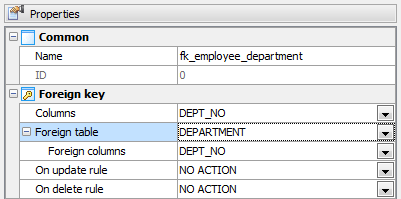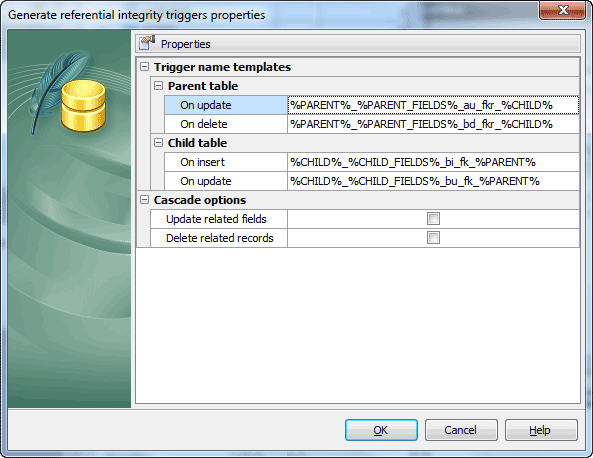SQLite Maestro online Help
| Prev | Return to chapter overview | Next |
Foreign Keys
A foreign key is a field (or collection of fields) in one table that uniquely identifies a row of another table. In other words, a foreign key is a column or a combination of columns that is used to establish and enforce a link between the data in two tables.
Foreign keys are created within the Foreign Key Properties dialog window. In order to open the dialog you should either
or
or
|
Foreign Keys are edited within the Foreign Key Properties dialog window. In order to open the dialog you should either
or
You can change the name of the foreign key using the Rename Foreign Key dialog. To open the dialog you should either
or
|
To drop the foreign key:
or
and confirm dropping in the dialog window.
|
Select Columns from the Available Fields list to include into the foreign key, select the Foreign Table Name from the drop-down list and its fields from the list to include, and apply the changes by clicking the OK button.

All the fields which are included into the Foreign Key must be included into indexes as well. See Indexes for details.
SQLite Maestro allows you to enforce foreign key constraints using referential integrity triggers. To generate such triggers to a foreign key, use the Generate referential integrity triggers link of the foreign key node' popup menu at the Explorer tree. This command is provided to generate 4 triggers: 2 triggers will accomplish the referential integrity in the parent table (on update and on delete) and 2 triggers - on the child one (on insert and on update). Use the opened window to specify the triggers names and set foreign key Cascade options.





 Download
Download Buy
Buy